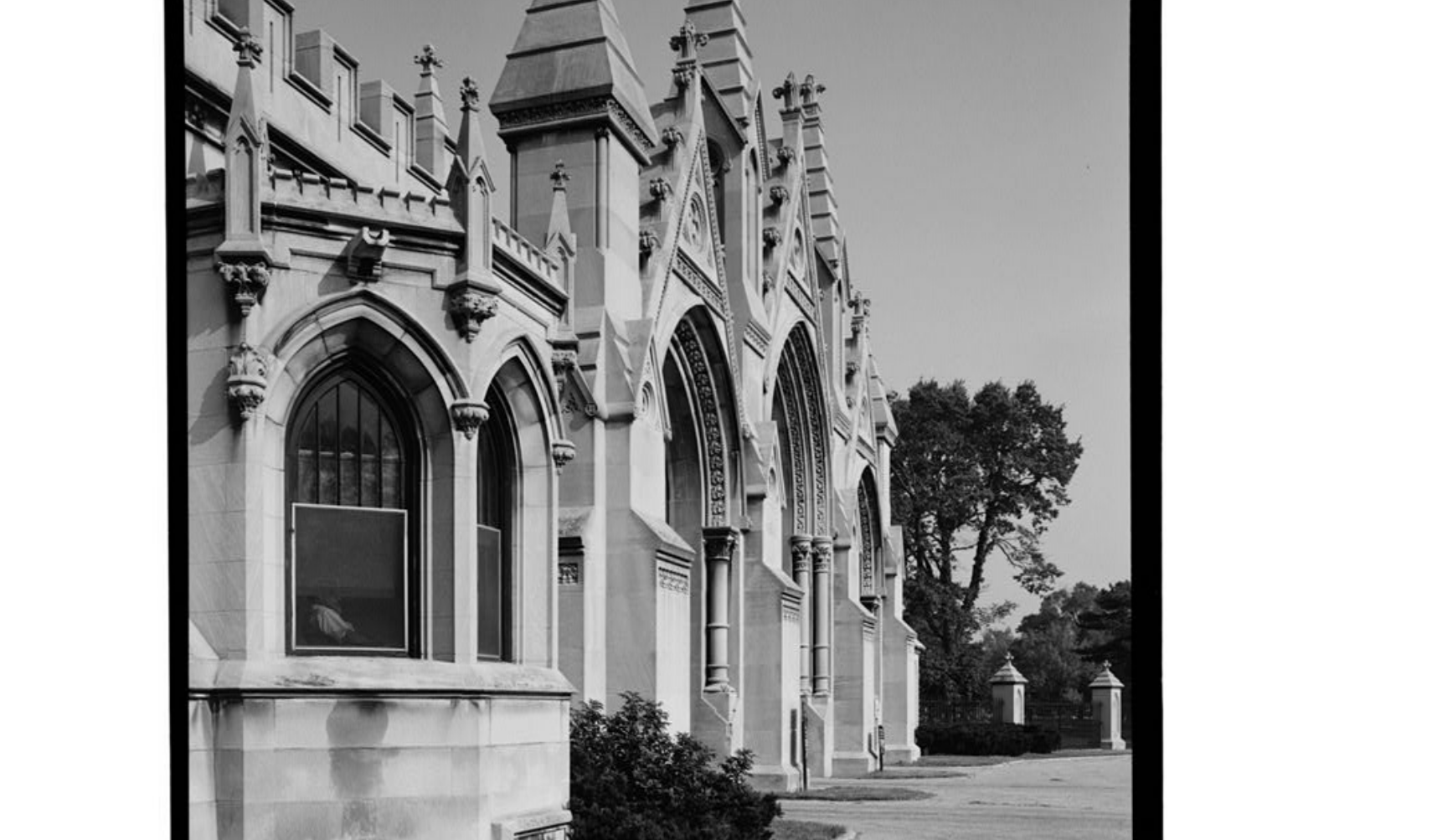Sentry House

Dwarfed by the Waiting Station and Gothic Gates, the Sentry House sits at the 34th and Boulevard entrance of Crown Hill Cemetery. Designed by Vonnegut and Bohn, the limestone structure is adorned with a crenellated parapet, Gothic arches, and finials. Once used as an office for the guards who roamed the cemetery, plans are underway to restore the exterior and convert the interior to space for use by the education department of the Foundation.
The architecture firm Vonnegut and Bohn was founded in 1888 by Bernard Vonnegut Sr., FAIA (1855–1908) and Arthur Bohn (1861–1948). Trained in both American and German architectural academies, their works have a distinct German influence. The firm was responsible for many buildings throughout Indiana, particularly in Indianapolis. After Vonnegut died in 1908, his son Kurt Vonnegut Sr. (1884–1957), returned from studying in Germany and became a principal in the firm. Later, Mueller joined as a partner and the firm was renamed Vonnegut, Bohn & Mueller Architects. Among the buildings designed by Vonnegut and Bohn while Bernard was living included the Das Deutsche Haus, now called the Athenaeum (1893, 1897); the French Romanesque Schnull-Rauh residence at 3050 N. Meridian St. (1904); the former Louis Levy Home at 2902 N. Meridian St. (1904); the former L.S. Ayres building at 1 W. Washington (1905); and the original Herron School of Art buildings at 16th and N. Pennsylvania Streets (1906, 1908). They also designed Indianapolis Public Schools 9, 15, 35, and 45; the Student Union Building at Indiana University in Bloomington, and the Eliza Fowler Hall at Purdue University in West Lafayette.

While credit for the designs is usually given to the firm, Bohn is given credit for the design of the W.H. Block Building (1912) at Market and Illinois Streets (with Kurt Vonnegut), and the American Fletcher Bank Building (1915) at Market and Pennsylvania Streets. While still standing, both buildings have been repurposed. His obituary in the Indianapolis Times mentions that he received national attention when he designed the “Crown Hill Cemetery Columbarium,” a structure never constructed.
Among the buildings produced by Vonnegut and Bohn during Kurt’s tenure were the Lyric Hotel at 125 N. Illinois St. (1919); the Severin Hotel, now the Omni Severin, at 40 W. Jackson Place (1913); and many Hook’s Drug Stores and Indiana Bell buildings around the state. One of Vonnegut’s greatest accomplishments was leading the effort to move and rotate the Indiana Bell Building, located at the corner of New York and Meridian Streets. In 1930, the eight-story brick building was picked up, set on rollers, moved 52 feet south, turned 90 degrees, and then moved 100 feet west, all the while continuing operations and services with employees working inside. Check out the move here.

